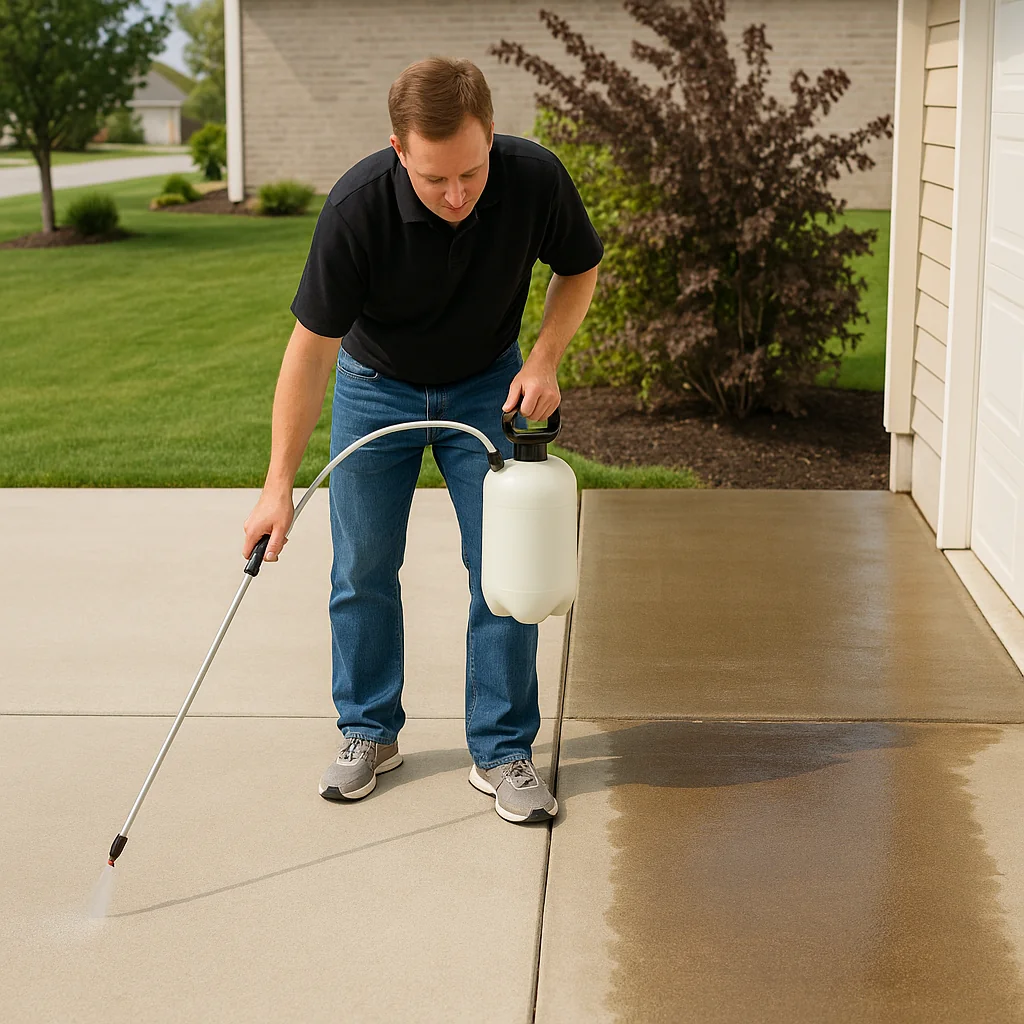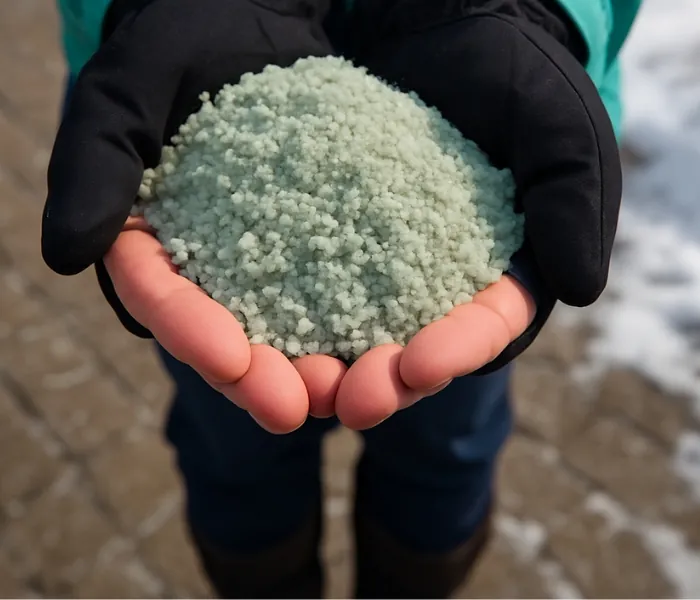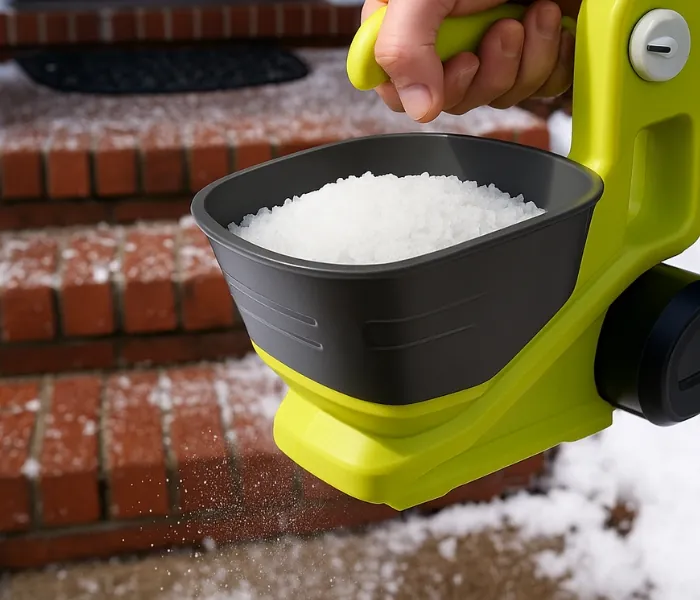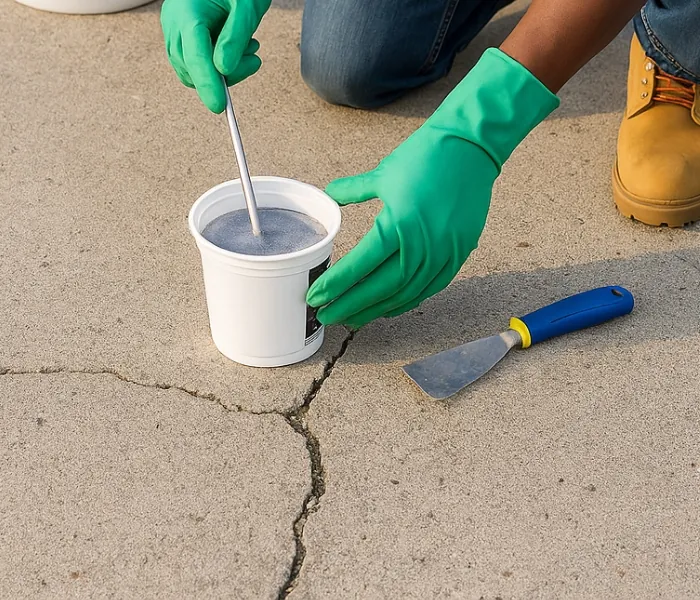The Effectiveness of Concrete Bollards – Protection and Security
The original bollards were crafted using massive tree trunks, or vertical cannon...
Salt damage on concrete is one of the concerns of homeowners and business owners; they want to prevent accidents, but at the same time, they do not want to damage their concrete. Winter is the coldest season of the year. When the snow appears, some people prepare differently for that moment. One of them, and for preventing accidents, is putting salt on the concrete. Many accidents have occurred because the concrete gets frozen because of the snow. The salt on the concrete could be a good solution to avoid that. However, it could come with hidden costs. That is why we will explain in this article “Salt Damage on Concrete and Environmental Effects and how to prevent both.””
Before explaining how to prevent salt damage on concrete and its environmental effects, we want to clarify that salting concrete is only recommended for areas where the owner is ok with the concrete degrading at a rapid rate.

Concrete is naturally porous, meaning it absorbs moisture easily. In cold weather, when that moisture contains salt from de-icing products, it creates a destructive cycle: the water seeps in, freezes, expands, and gradually causes the surface to crack, flake, or crumble. One of our recommendations is to apply a high-quality concrete sealer to avoid salt damage on concrete.
Applying a high-quality concrete sealer before winter or before snow can create a protective barrier that minimizes moisture and salt infiltration. Sealers are usually used for exposed surfaces like driveways, sidewalks, patios and outdoor steps. By sealing concrete properly, you protect against more than just water; you defend your surfaces against harsh winter chemicals and the damaging freeze-thaw cycle.
But you are wondering, what are the best sealers? Well, there are different sealers, including penetrating and film-forming sealers. For example, penetrating sealers are generally used for outdoor concrete, as they absorb into the surfaces without changing their appearance, offering lasting protection with minimal maintenance.
1. Blocks moisture from penetrating the surface
2. Reduces risk of cracks caused by freeze-thaw cycles
3. Helps prevent surface scaling and erosion
4. Minimizes salt damage on concrete during winter
5. Improves appearance and makes cleaning easier

Even though salt can be an effective solution because it is melting ice, it can have significant adverse effects on concrete and negative environmental impacts. Sodium chloride- the most common de-icing salt- accelerates surface deterioration and pollutes runoff, affecting soil health, aquatic ecosystems, and even drinking water sources. High salt concentrations can be devastating for the vegetation, corrode infrastructure, and interfere with water treatment systems.
The good news is that there are solutions; we can recommend several alternatives that offer similar results with fewer risks. These de-icers are typically less corrosive, biodegradable and safer for nearby plants and pets. Some cities and regions have used organic blends, like beet juice or cheese brine, to enhance ice control while minimizing environmental harm.
1.Calcium magnesium acetate (CMA): Non-corrosive and eco-friendly
2.Potassium chloride: Safer for vegetation
3.Sand or crushed stone: Provides traction without melting
4.Beet brine or cheese brine: Organic solutions used by some municipalities

One of our most practical and straightforward recommendations is to remove the snow before it turns into compacted ice. Shovelling early and regularly reduces the need for chemical de-icers altogether. A proactive approach also means less wear on your concrete surfaces.
The snow becomes slippery and difficult to manage when it is left to accumulate, and therefore, it partially melts and refreezes. This is a mistake, and people try to find a way to resolve it by using chemicals that can destroy the concrete. Preventing this cycle in the first place can make winter maintenance easier and safer.
1. Prevents snow from compacting and freezing into ice
2. Reduces reliance on salt or chemicals
3. Minimizes long-term exposure of concrete to harmful materials
4. helps maintain a safer surface naturally

As we mentioned at the beginning of this article, we highly recommend that salt be added to concrete that you prefer not to stay intact. For example, blanket-salting an entire driveway or walkway is usually unnecessary. Instead, we recommend putting the salt in strategic areas such as stairs, steep slopes and primary paths. Also, try don’t use excessive salt because it accelerates concrete damage and increases environmental runoff into soil and water systems.
Using too much salt can be counterproductive because it doesn’t melt ice faster and leads to more frequent repairs. Putting salt in specific and small areas can degrade the concrete faster in those spots, leading to uneven surfaces and dangerous trip hazards.
1. Apply only where foot or vehicle traffic occurs
2 Use a handheld or push spreader for even distribution
3. Follow product guidelines—more isn’t always better
4. Sweep up leftover salt after ice has melted to prevent buildup

Adding traction might be better than melting ice if your goal prevents slips. Many traction materials are non-corrosive and safe for both concrete and the environment. We usually recommend it in areas where the ice is thin or temporary. Also, traction materials such as sand can be reused, making them a practical choice for eco-conscious homeowners. These kinds of materials are used in conjunction with early snow removal.
This practice is beneficial in zones where ice accumulation is light or patchy, such as short walkways, residential driveways, or porch steps. Adding traction in those areas allows you to maintain safety while avoiding the negative consequences of salt exposure. It’s also a great strategy when you need a quick fix before you go out the door or when temperatures are too low for salt to work effectively.
1. Sand: Inexpensive and reusable
2.Crushed gravel or stone chips: Durable and effective
3.Coffee grounds or wood ash: Low-cost alternatives with natural textures

Another alternative, but not much cheaper, is to repair cracks and resurface the concrete annually, especially in areas exposed to winter conditions and experiencing wear and tear from traffic and weather. Even small cracks in concrete can let in water and salt, starting a chain reaction of damage. Once the salt is inside, it accelerates the breakdown of the material from within. These damages can worsen quickly during freeze-thaw cycles, especially when neglected.
In this case, we also suggest annual inspections and minor repairs; this is an excellent idea because it can extend the life of your concrete. Resurfacing or patching worn spots before winter adds an extra layer of defence. We even recommend reviewing the sealed concrete yearly to ensure the condition remains intact.
1.Inspect all concrete surfaces for hairline cracks or chips
2.Use crack filler or resurfacer for minor damage
3.Consider hiring a professional for larger or structural repairs
4.Reapply sealer after repairs are complete

Education about the use of this chemical is crucial to avoid severe damage to whole areas. The salt damage on concrete can be severe if people are not aware of the implications of their use. Communities around North America have become more aware of the impact on the community, the environment and the cost of the infrastructure. That’s why educating the community is one of the most effective methods to create long-term change. Salt runoff doesn’t just disappear; it enters storm drains and flows into rivers, lakes, and soil systems – affecting water quality and plant life.
1.Share seasonal maintenance tips with neighbors or local Facebook groups
2.Create a printable handout or flyer for your HOA or tenant association
3.Recommend eco-friendly de-icers and safe application methods
4.Advocate for designated salt-use guidelines in your neighbourhood
5.Encourage local businesses to train staff on smart salt practices
6.Talk to local schools or community centers about hosting awareness sessions
Salt damage on concrete is more than just cosmetic; it weakens your space and makes you spend a lot of money on repairs. Also, the use of this chemical has adverse side effects, such as effects on the environment. We know the importance of avoiding winder accidents when the concrete gets frozen. Still, there are alternatives that you can choose to save the lives of your loved ones while avoiding managing the concrete and the environment.